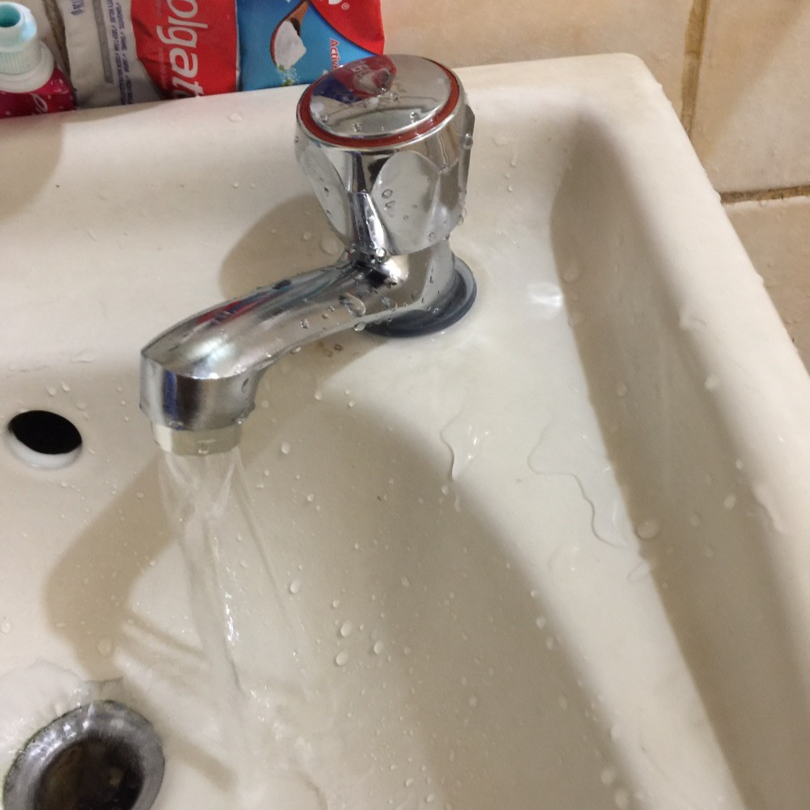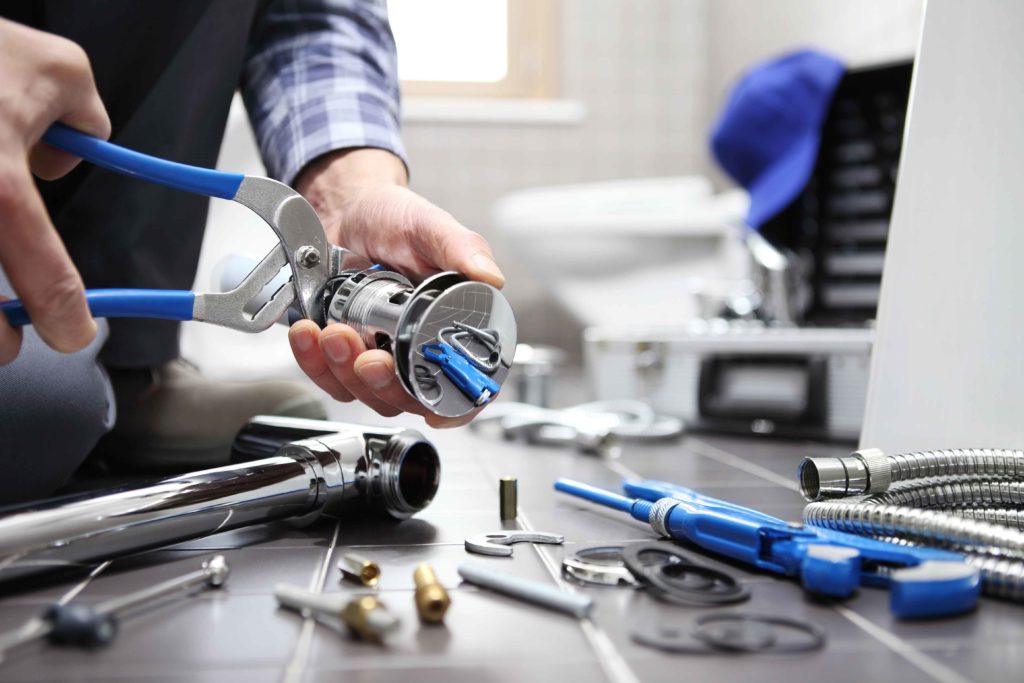How It's Essential to Rectify a Leaking Faucet
How It's Essential to Rectify a Leaking Faucet
Blog Article
We have discovered this great article involving Leaky Faucets: Why They Happen & What to Do About Them down the page on the net and concluded it made good sense to relate it with you here.

Dripping faucets may appear like a minor aggravation, yet their effect goes beyond just the nuisance of the noise. From drainage to incurring unnecessary economic expenses and wellness risks, overlooking a leaking faucet can bring about various repercussions. In this write-up, we'll delve into why it's essential to address this typical household problem without delay and efficiently.
Waste of Water
Environmental Influence
Dripping faucets contribute substantially to water wastage. According to the Epa (EPA), a single tap trickling at one drip per secondly can throw away more than 3,000 gallons of water each year. This not only stress water resources however also impacts ecosystems and wild animals depending on them.
Financial Prices
Increased Water Bills
Past the ecological influence, dripping taps can inflate water bills substantially. The collected wastage with time translates right into higher utility costs, which can have been stayed clear of with prompt repair services.
Potential Home Damage
Moreover, extended dripping can cause damage to components and surfaces surrounding the tap. Water buildup can trigger staining, rust, and even structural concerns if left unattended, causing added fixing costs.
Wellness Concerns
Mold And Mildew and Mildew Development
The consistent existence of dampness from a leaking tap creates an excellent setting for mold and mildew development. These fungi not only jeopardize indoor air quality but also position wellness threats, specifically for individuals with respiratory conditions or allergies.
Waterborne Illness
Stationary water in trickling taps can become a breeding ground for bacteria and various other virus, raising the threat of waterborne conditions. Pollutants such as Legionella germs flourish in stagnant water, potentially leading to serious health problems when ingested or inhaled.
Do it yourself vs. Specialist Repair service
Advantages and disadvantages of DIY Repair
While some might try to deal with a dripping tap themselves, do it yourself fixings come with their very own collection of challenges. Without proper knowledge and tools, do it yourself efforts can exacerbate the issue or result in incomplete repair work, extending the problem.
Benefits of Working With an Expert Plumber
Employing a specialist plumber guarantees that the underlying cause of the dripping tap is resolved properly. Plumbing professionals possess the knowledge and equipment to identify and repair tap problems efficiently, conserving time and decreasing the danger of more damages.
Step-by-Step Guide to Fixing a Dripping Tap
Tools Called for
Before trying to fix a leaking faucet, collect the necessary devices, including an adjustable wrench, screwdrivers, replacement components (such as washers or cartridges), and plumber's tape.
Common Tap Issues and Their Solutions
Determine the sort of faucet and the certain issue causing the drip. Usual problems consist of worn-out washing machines, rusty valve seats, or malfunctioning O-rings. Describe maker guidelines or online tutorials for step-by-step guidance on fixings.
Preventive Measures
Routine Upkeep Tips
To stop trickling taps, do routine maintenance such as cleansing aerators, examining for leakages, and replacing damaged parts promptly. Furthermore, take into consideration mounting water-saving gadgets or updating to a lot more effective components.
Value of Prompt Services
Dealing with leaking faucets as soon as they're observed avoids more water waste and prospective damages, eventually saving both water and money in the long run.
Effect On Home Worth
Perception of Well-Maintained Property
Preserving a home in good condition, including attending to upkeep problems like trickling taps, enhances its perceived worth and desirability amongst possible customers or occupants.
Impact on Resale Value
Residences with well-kept plumbing fixtures, consisting of faucets, command greater resale values in the property market. Addressing trickling taps can add to a favorable impression during building inspections and settlements.
Environmental Duty
Specific Payment to Conservation
Taking responsibility for dealing with dripping taps straightens with broader initiatives toward water conservation and environmental sustainability. Every person's activities jointly make a significant impact on preserving valuable sources.
Sustainable Living Practices
By prioritizing punctual repair services and taking on water-saving practices, individuals add to sustainable living techniques that benefit both present and future generations.
Conclusion
Resolving a trickling tap goes beyond simple benefit; it's an essential action towards preserving water, reducing economic expenses, and safeguarding health and property. Whether with do it yourself fixings or professional help, taking action to deal with dripping taps is a small yet impactful method to advertise liable stewardship of resources and add to a much healthier, a lot more lasting future.
How to Fix a Leaky Faucet: Step-by-Step Repair Guide
A leaky faucet may seem like a simple annoyance, but if it's not fixed promptly, that leak could cost hundreds to potentially thousands. From water damage to mold, mildew, and high water bills, even a tiny leak can be catastrophic if left unattended. Damage like this can even affect the overall value of your home, so it's important to take the right approach for leaky faucet repair. You may need the help of a plumber in some cases, but we've got a few tips you can try on how to fix a leaky faucet before calling the pros.
Four Faucet Types
When you're learning how to fix a leaky faucet, the first step is knowing what kind of faucet you're working with! There are four common types.
Cartridge Faucets
Cartridge faucets come in one- or two-handled varieties. In one-handled cartridge faucets, hot and cold water combines in a single cartridge. In the two-handled versions, hot and cold water are controlled separately and mixed in the faucet.
Ball Faucets
Ball faucets have a single lever you push up and down to adjust the pressure and rotate to change the temperature. A slotted metal ball controls the amount of water allowed into the spout.
Compression Washer Faucets
They're the oldest type of faucet, but they're still used in many homes — especially older ones. Compression faucets have two separate handles that, when turned, raise or lower the washer that seals a water valve. This valve stops water from flowing through the faucet when it is turned off.
Disc Faucets
Disc faucets rarely need to be repaired due to their maintenance-free design. The water flow is controlled by two discs — the upper one raises and lowers against a fixed lower disc, creating a watertight seal. If your disc faucet starts leaking, you may need to replace the seals or clean residue buildup from the inlets.
Fixing a Leaky Faucet
Step 1: Turn Off the Water
Whether you're learning how to fix a leaky bathtub faucet or how to fix a leaky kitchen faucet, always turn off the water supply to your working area when you're fixing a leak. The last thing you want is a flood added to your list of things to fix.
Look for the shutoff valves below your sink or around the tub and turn them clockwise to stop the water flow. If your faucet doesn't have shutoff valves, you may need to turn off the water for the whole house. Check to make sure it's off by turning the faucet on. If nothing comes out, you're ready to start the repair.
Step 2: Take Apart the Faucet
How you disassemble your faucet depends on the type of fixture you have. You can use a flathead screwdriver to remove the caps on top of the handle or handles for cartridge and compression faucets. Inside, you should see handle screws. Unscrew these with a screwdriver to remove the handle.
Disc- and ball-style faucets will typically have an inlet screw near the handle, and removing that will reveal the interior of the faucet.
Detach the Valve Stem
For cartridge- and compression-style faucets, you'll see the inner valve stem or cartridge once you remove the faucet handles. If you have a compression faucet, unscrew the brass valve stem. If you have a cartridge faucet, pull out the cartridge. If your cartridge has been in place for a while, it may require some tools or extra force to remove it due to mineral deposits.
Examine and Replace Parts
Once you've removed the parts, check them out to confirm what needs to be replaced. You may see corroded rubber washers, O-rings, stems, or cartridges. On a ball-style faucet, check the seats and springs for damage.
If you need to repair a leaky disc faucet, check the inlet and seals on the lower disc.
Once you determine what parts must be replaced, visit your local hardware store. Bring the damaged parts with you to ensure you can purchase the correct components to replace them.
Clean Valves and Faucet Cavity
If you've removed a stem or cartridge, you may notice mineral buildup in the faucet's threads. Use white vinegar to clean the valve seat by soaking it for a few minutes, then scrub it away with a soft toothbrush and rinse with warm water. You can also clean the interior of the faucet in the same way.
Reassemble the Faucet
Once your faucet is cleaned and the required parts have been replaced, it's time to reassemble it. Put the pieces back together and slowly turn the water supply back on. Doing this slowly is crucial because too much initial water pressure can damage the new hardware you've just installed.
https://homewarranty.firstam.com/blog/how-to-fix-leaky-faucet

As a serious reader on How to Fix a Dripping or Leaky Faucet , I imagined sharing that editorial was essential. Please take a moment to promote this content if you liked it. I enjoy reading our article about .
Report this page